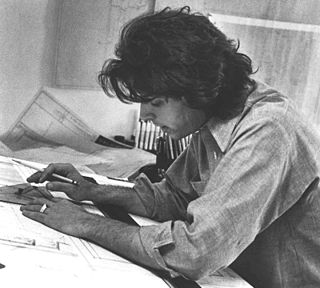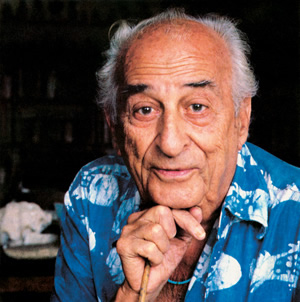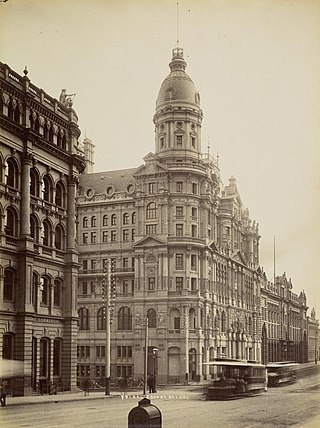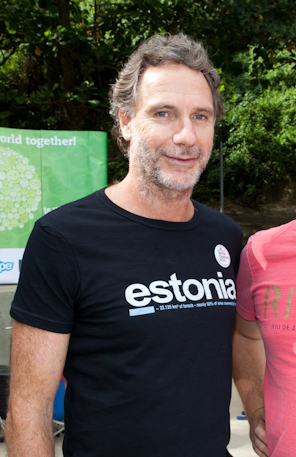
Maracanã Stadium, officially named Estádio Jornalista Mário Filho, is an association football stadium in Rio de Janeiro, Brazil. The stadium is part of a complex that includes an arena known by the name of Maracanãzinho, which means "The Little Maracanã" in Portuguese. Owned by the Rio de Janeiro state government, the stadium is now managed by the clubs Fluminense and Flamengo. It is located in the Maracanã neighborhood, named after the Rio Maracanã, a now canalized river in Rio de Janeiro.

Marc Ferrez was a Brazilian photographer active in Rio de Janeiro. He photographed Brazil from south to north, but paid more attention to his home city, Rio de Janeiro. Ferrez is most well known for his albums of railway constructions and the panoramic views of the city of Rio de Janeiro and its development. His other popular works document architecture and Brazili's natural feaures, such as mountains, waterfalls, and jungles. Ferrez is considered by photography historians to be a master at his craft; his work is on the same level as famous photographers William Henry Jackson and Eadweard Muybridge.

The Alberto José Armando Stadium is a football stadium located in La Boca, Buenos Aires, Argentina. The stadium is widely known as La Bombonera due to its shape, with a "flat" stand on one side of the pitch and three steep stands around the rest of the stadium.

Alfons Hug is a curator, critic and exhibition organizer.

Marlos Nobre is a Brazilian composer. He has received commissions from numerous institutions, including the Ministry of Culture in Spain, the Free University of Music of São Paulo, the Neuchâtel Chamber Orchestra in Switzerland, The Apollon Foundation in Bremen, Germany and the Maracaibo Music Festival in Venezuela. He has also sat on the juries of numerous international music competitions, including the Cità di Alessandria Prize, the Arthur Rubinstein Piano Master Competition and the Paloma O'Shea Santander International Piano Competition.

Abdias do Nascimento was a prominent African Brazilian scholar, artist, and politician. Also a poet, dramatist, and Pan-African activist, Nascimento created the Black Experimental Theater (1944) and the Black Arts Museum (1950), organized the National Convention of Brazilian Blacks (1946), the First Congress of Brazilian Blacks (1950), and the Third Congress of Black Culture in the Americas (1982). Professor Emeritus, State University of New York at Buffalo, he was the first Afro-Brazilian member of Congress to champion black people's human and civil rights in the National Legislature, where in 1983 he presented the first Brazilian proposals for affirmative action legislation. He served as Rio de Janeiro State Secretary for the Defense and Promotion of Afro-Brazilian People and Secretary of Human Rights and Citizenship. While working as curator of the Black Arts Museum project, he began developing his own creative work (painting), and from 1968 on, he exhibited widely in the U.S., Brazil and abroad. He received national and international honors for his work, including UNESCO's special Toussaint Louverture Award for contribution to the fight against racism, granted to him and to poet Aimé Césaire in 2004. He was officially nominated for the 2010 Nobel Peace Prize.

A cultural center or cultural centre is an organization, building or complex that promotes culture and arts. Cultural centers can be neighborhood community arts organizations, private facilities, government-sponsored, or activist-run.
Brígida Baltar was a Brazilian visual artist. Her work spanned across a wide range of mediums, including video, performance, installation, drawing, and sculpture. She was interested in capturing the ephemeral in her artwork.

John Storyk is a registered architect and acoustician who, together with wife and business partner Beth Walters, co-founded Walters-Storyk Design Group (WSDG). Beginning in 1968 with Electric Lady Studios for Jimi Hendrix in New York City, and founding partner of Walters-Storyk Design Group. Soon to celebrate his 50th anniversary as an innovative recording studio designer, he began his career in 1968 with Electric Lady Studios for Jimi Hendrix in New York City, Storyk and WSDG have produced the provided design, system integration, and construction supervision services for nearly 4000 professional audio recording and video production/post-production studios, performance venues, sports venues, houses of worship and educational facilities. His work includes private studios for Jay-Z, Bruce Springsteen, Alicia Keys, Whitney Houston, Bob Marley, Aerosmith, Green Day, Goo Goo Dolls and R. Kelly.

Héctor Julio Páride Bernabó was an Argentine-Brazilian artist, researcher, writer, historian and journalist. His nickname and artistic name, Carybé, a type of piranha, comes from his time in the scouts. He died of heart failure after the meeting of a candomblé community's lay board of directors, the Cruz Santa Opô Afonjá Society, of which he was a member.

The Argentina–Brazil relationship is both close and historical, and encompasses the economy, trade, culture, education, and tourism. From war and rivalry to friendship and alliance, this complex relationship has spanned more than two centuries. The countries also share a system of government, a federal republic with a presidential system.

The Portuguese conquest of the Banda Oriental was the armed-conflict that took place between 1816 and 1820 in the Banda Oriental, for control of what today comprises the whole of the Republic of Uruguay, the northern part of the Argentine Mesopotamia and southern Brazil. The four-year armed-conflict resulted in the annexation of the Banda Oriental into the United Kingdom of Portugal, Brazil and the Algarves as the Brazilian province of Cisplatina.

The description Paris of the South has been applied to a number of locations, including:
Sergio Roberto Santos Rodrigues was a Brazilian carioca architect and designer. Along with Joaquim Tenreiro and José Zanine Caldas, Rodrigues was the pioneer to transform the Brazilian design in industrial design and make it known worldwide. He began his work in the field of architecture in the project of the civic center along with the also architects David Azambuja, Flávio Régis do Nascimento e Olavo redig de Campos.

Fayga Perla Ostrower was a Polish-Brazilian engraver, painter, designer, illustrator, art theorist and university professor.

Sergio Castiglione is an Argentine photographer. He has exhibited his work in Argentina as well as abroad. He mainly focuses on urban exploration, travel, and architectural photography.

Oskar Metsavaht is a Brazilian artist, academic degree in medicine, fashion designer environmental activist and Amazon guardian. Oskar's work expresses the theme of preserving the forest, water and the empowerment and protection of the peoples of the forest, as an artist, designer and activist. He is founder and creative director of Osklen, a Brazilian fashion brand, recognized as one of the forerunners of the New Luxury concept that strives for the fusion between ethics and aesthetics and advocates conscious fashion through the adoption of sustainable practices. Creative Director of OM.art studio, where he hosts his art studio, an exhibition space and the studio for the development and production of art projects. Metsavaht serves as UNESCO Goodwill Ambassador. Creator of Janeiro Hotel, located in Leblon, Rio de Janeiro. He is also on the advisory board of the Inhotim Institute and board member of Museum of Modern Art (MAM) of Rio de Janeiro. In 2014, Oskar Metsavaht was awarded as Knight of Ordem do Mérito Cultural medal from the Ministry of Culture (Brazil) an honorary order granted by the Federal Government to personalities and institutions that make relevant contributions to Brazil's culture.














